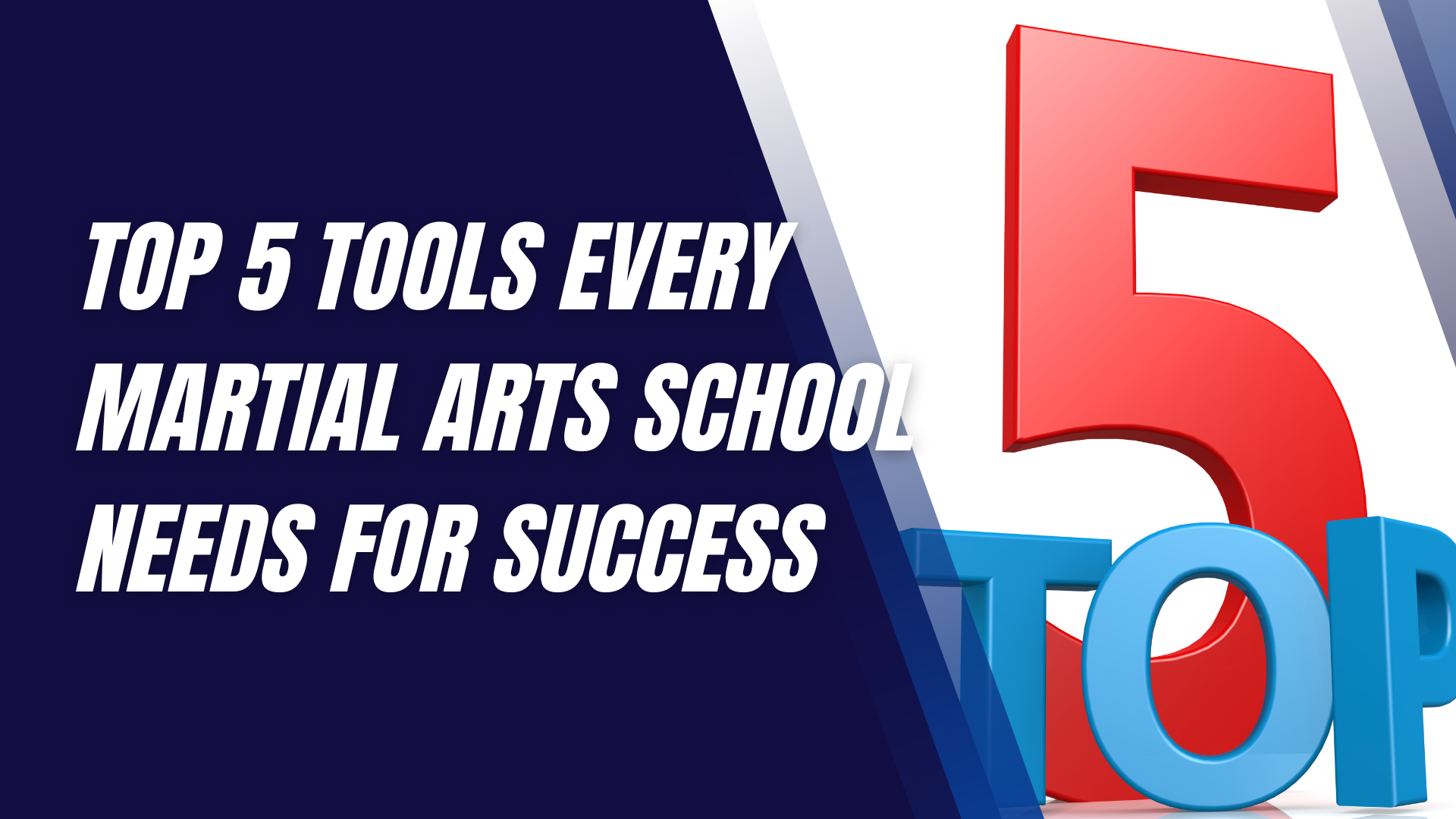How to Create a Martial Arts Gym That Stands Out from the Competition
Opening a martial arts gym is a fulfilling business venture, but it also comes with its own set of challenges—chief among them being competition.
Martial arts gyms are growing in popularity as more people look for ways to stay fit, learn self-defense, or pursue a competitive fighting career. To succeed, you need to create a gym that is not only functional but also stands out in a saturated market. This guide walks you through everything you need to know about how to create a martial arts gym that stands out from the competition.
Introduction to Martial Arts Gym
The martial arts industry is booming, with gyms popping up in cities around the world. More people are turning to martial arts for fitness, self-defense, and personal development, which makes this a lucrative market. However, this also means there's a lot of competition. To create a gym that stands out, you need to offer more than just a place to train—you need to create an experience that captivates, engages, and retains members.
Understanding market trends, the growing interest in mixed martial arts (MMA), and the importance of personalized training are key. Potential gym owners must consider how to position their gym to attract the right audience while managing costs and maximizing profitability.
Identifying Your Niche
One of the most critical decisions when opening a martial arts gym is identifying your niche. Martial arts is a vast field with various styles and disciplines. Will you focus on Brazilian Jiu-Jitsu (BJJ), Muay Thai, MMA, Karate, or perhaps a hybrid model? Knowing your niche will not only attract the right clientele but will also allow you to become an authority in that discipline.
- Define Your Target Audience: Determine if you’ll focus on children, adults, competitive fighters, or a mix of all. Each demographic has different needs, and your gym's atmosphere should cater accordingly.
- Specialization: While it may be tempting to offer multiple forms of martial arts, specializing in one or two disciplines can make you stand out as an expert. For example, an exclusive Brazilian Jiu-Jitsu gym may gain a reputation for being the best BJJ school in town.
Location and Facility Design
Where your gym is located and how it’s designed can greatly impact your success. A gym that’s easily accessible and welcoming will attract more members.
- Choosing the Ideal Location: Consider areas with high foot traffic, proximity to schools, and ease of access. You want a location that is visible and convenient for your target demographic.
- Facility Layout and Design: Your gym should have an inviting, clean, and well-ventilated space. Ensure ample room for warm-ups, training, and sparring. Invest in quality mats, mirrors, and equipment that can withstand the rigors of martial arts training.
- Ambiance: Create an environment that is both professional and welcoming. The lighting, colors, and overall aesthetics should align with your gym’s brand and make members feel comfortable.
Branding and Identity
Your brand is more than just a logo—it’s the identity of your gym. It communicates your values and differentiates you from competitors.
- Unique Brand Name and Logo: Create a memorable name and a logo that reflects your gym's philosophy. For example, a gym that focuses on discipline and respect might choose a strong, traditional name with minimalist design elements.
- Gym Values: Whether it's perseverance, discipline, respect, or self-improvement, the values of your gym should be at the forefront of your branding. These principles should be evident in everything from your website design to the way your instructors interact with students.
Instructor Quality and Training
The quality of your instructors can make or break your gym. In martial arts, where technique and discipline are paramount, having highly skilled and certified instructors is essential.
- Hire Experienced Instructors: Look for instructors with a proven track record in their martial art discipline. Certifications, fight records, and a solid teaching methodology are key factors.
- Continuous Training and Development: Encourage your instructors to stay updated with the latest techniques and trends in martial arts. This shows members that your gym is committed to excellence.
- Building a Team Culture: Your instructors should work as a cohesive team, fostering an atmosphere of mutual respect and support.
Building a Strong Gym Culture
Culture is often what keeps members coming back. Martial arts gyms that promote a sense of community and personal development beyond physical fitness tend to stand out.
- Fostering Discipline and Respect: Martial arts are rooted in values such as discipline and respect. Make these values integral to your gym's culture.
- Encouraging Personal Growth: Martial arts isn't just about physical fitness—it's also about mental strength and personal development. Offer guidance that helps members grow both on and off the mat.
- Creating a Sense of Belonging: Encourage a supportive environment where members feel like they're part of a community. Organizing social events, graduation ceremonies, and potluck dinners can strengthen bonds between members.
Marketing and Promotions
Even the best martial arts gym won’t succeed without proper marketing. A well-planned marketing strategy can significantly increase visibility and attract new members.
- Digital Marketing: Utilize SEO, Google My Business, and local advertising to attract people searching for martial arts gyms in your area.
- Social Media Engagement: Platforms like Instagram, YouTube, and Facebook are excellent for showcasing your gym’s atmosphere, posting highlights from training sessions, and sharing testimonials.
- Referral Program: Word-of-mouth is powerful in the fitness industry. Create a referral system that rewards members for bringing in friends and family.
Membership Structures and Pricing
Offering flexible membership options can appeal to a broader audience while maintaining profitability.
- Competitive Pricing: While pricing is crucial, the cheapest option isn't always the best. Offer tiered memberships based on training frequency, personal training sessions, or family discounts to cater to a variety of budgets.
- Loyalty Programs: Reward long-term members with discounts or special perks to encourage retention.
- Family and Student Packages: Create package deals that cater to families or offer discounted rates for students to attract more members.
Offering Unique Services
To truly differentiate your gym, consider offering unique services that set you apart from competitors.
- Self-Defense Seminars: Hosting workshops on practical self-defense techniques can attract a broader audience, including people who may not be interested in martial arts full-time.
- Children’s Programs: Offering martial arts classes for kids can be a great way to engage families. Parents often look for programs that instill discipline and physical activity in their children.
- Personal Training: Providing one-on-one coaching allows you to offer personalized instruction that can help students progress faster.
Incorporating Technology
In today's digital age, incorporating technology into your gym’s operations can improve efficiency and provide additional value to your members.
- Gym Management Software: Use software to streamline member registrations, class schedules, and payment processing.
- Virtual Coaching: Offer virtual classes for those who can’t make it to in-person training. This flexibility can help you reach a broader audience.
- Fitness Tracking Apps: Integrate fitness tracking tools that allow members to monitor their progress in terms of strength, conditioning, and martial arts techniques.
Customer Service and Retention
Providing excellent customer service is essential for long-term success. Satisfied members will stay longer and refer others to your gym.
- Collecting Feedback: Regularly ask for feedback from your members. This can help you identify areas of improvement and show that you value their input.
- Handling Conflicts: Whether it's between students or between staff and members, how you handle conflicts can significantly impact your gym's reputation.
- Retention Strategies: Offer loyalty rewards, member-exclusive events, and continuous engagement to keep your members satisfied.
Hosting Events and Competitions
Martial arts gyms thrive when they create excitement through events and competitions.
- In-House Competitions: Host small-scale, friendly competitions to motivate students and encourage camaraderie.
- Tournaments and Seminars: Invite well-known instructors or fighters to host seminars or participate in events. This adds credibility to your gym and attracts potential members.
Differentiating Through Community Involvement
Getting involved in the community can make your gym more visible and build goodwill.
- Sponsoring Local Events: Partner with local events like fairs or sports leagues to get your gym's name out in the community.
- Charity Work: Aligning your gym with charitable causes or community service projects can create a positive image and draw in new members who share those values.
- Partnering with Schools: Offering martial arts classes in schools or after-school programs is a great way to introduce younger audiences to martial arts.
Safety and Hygiene Standards
In a post-pandemic world, safety and hygiene have become more important than ever.
- Hygiene Protocols: Ensure all equipment and mats are regularly cleaned. Implement sanitation stations and have strict protocols in place for members to follow.
- Safety in Training: Emphasize safe training techniques to minimize injuries. This includes having the right equipment, properly trained instructors, and clear communication during sparring or intense drills.
Creating a Lasting Impact
Your martial arts gym should aim to create a lasting impression on members. Beyond fitness and self-defense, focus on holistic development that touches the body, mind, and spirit.
- Mental and Physical Growth: Highlight the mental and emotional benefits of martial arts, such as increased focus, stress management, and confidence-building.
- Community Empowerment: Empower your members to become leaders in their own lives, reinforcing the importance of personal accountability, perseverance, and discipline both on and off the mat.
FAQs
1. What martial arts should I specialize in for my gym? Choosing a martial art like BJJ, MMA, or Muay Thai will depend on your target audience and the market demand in your area. Research your competitors and consider offering something unique.
2. How much does it cost to open a martial arts gym? Costs can range from $10,000 to over $100,000 depending on location, equipment, and size. Plan for rent, instructor salaries, equipment, marketing, and insurance.
3. How can I attract new members to my gym? Leverage digital marketing, create referral programs, host events, and engage with your local community to attract new members.
4. Should I offer classes for children? Yes, offering classes for children is a great way to engage families and build long-term clientele. Many parents seek out martial arts programs for their kids.
5. How can I retain members at my martial arts gym? Retention strategies include offering loyalty programs, organizing social events, and regularly seeking feedback to ensure members' satisfaction.
6. What are the most important features of a martial arts gym? A clean, well-equipped facility, experienced instructors, a strong gym culture, and excellent customer service are all essential features of a successful martial arts gym.
Final Thoughts
Creating a martial arts gym that stands out from the competition is no small feat, but with the right strategies in place, you can build a successful, thriving gym. From identifying your niche to fostering a strong community, the key is to combine passion for martial arts with smart business practices.
Interested in trying a martial arts class? Find an affiliated academy anywhere in the country by clicking here.
Have your own martial arts program? Get to know more about what we have to offer at Ground Standard Agency for helping martial arts businesses grow.
Email us at info@groundstandard.com, or call and text us at (732) 907-8920 today to learn how to start growing your own academy, school, dojo, or gym with us as well.
Share this article












